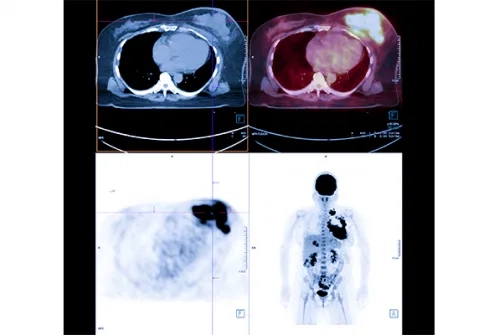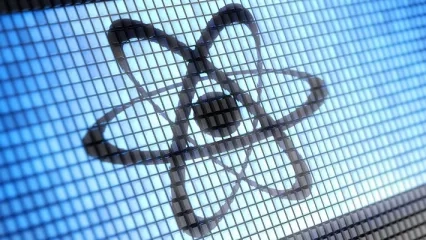Alo Yeditepe
Alo Yeditepe
Lutetium Treatment in Neuroendocrine Tumors
Neuroendocrine tumors (NETs) are rare tumors originating from the stomach, intestines, pancreas, and lungs. These tumors usually progress slowly and patients continue to live with the disease for a long time without any complaints. Since the symptoms can be confused with different diseases, it constitutes a group of diseases that are very difficult to diagnose.
What Are the Symptoms of Neuroendocrine Tumors?
Diagnosis of insidious neuroendocrine tumors is also very difficult. For this reason, correct diagnosis is extremely important for timely treatment. When the disease begins to show symptoms, usually symptoms such as abdominal pain, diarrhea, digestive problems, and nausea appear.
How to Diagnose Neuroendocrine Tumors?
Many different imaging methods can be used in the diagnosis of neuroendocrine tumors, including CT, MR, PET/CT, and ultrasound. PET/CT imaging performed with FDG, a kind of sugar used in the diagnosis of many cancers and in the detection of disease spread, falls short in detecting neuroendocrine cancers. For this reason, special PET/CT scans using smart molecules are used for neuroendocrine cancers. Gallium-68 DOTATATE PET/CT imaging is used to find and image tumor cells in the body at the molecular level. Gallium-68 DOTATATE is accepted as an up-to-date imaging method used for neuroendocrine tumors.
What is Lutetium Treatment in Neuroendocrine Tumors?
As with other cancers, the main treatment for neuroendocrine tumors is surgery. However, because it is a late-recognized disease, very few of the patients have the chance to undergo surgery. Lu-177-DOTATATE treatment (Peptide Receptor Radionuclide Therapy) is the most effective treatment that can be used in patients who cannot be treated surgically. Known as lutetium therapy, Lu-177 therapy, this therapy is used as the treatment method that extends the patient's life expectancy the most in advanced neuroendocrine tumors.
How to Apply Lutetium Treatment?
Lutetium 177-DOTATATE is prepared in the laboratories in the hospital and given to the patient in serum by intravenous route. The smart drug finds the cancerous tissue through the receptors on itself and enters the cell. Thus, the cancerous tissue is irradiated through the cell. Therefore, while the cancerous tissue is irradiated, very little damage is ensured to the healthy tissues. The patient not only does not feel any side effects during the treatment but also no significant side effects are expected after the treatment, except for a temporary and mild decrease in blood values.
What is the Duration of Lutetium Treatment for Neuroendocrine Tumors?
Lutetium 177 DOTATATE treatment is usually administered in 3 or 4 cycles at intervals of 6-8 weeks. It can be applied up to 8-10 cycles according to the course of the disease, kidney functions, blood values, and special calculations.
Patients suitable for treatment are determined by being examined by experienced nuclear medicine specialists. After the planning is made for the patients for whom the treatment decision is taken, smart medicine is given intravenously in a protected private room under the supervision of experienced medical personnel, nurses, and doctors.
Misconceptions About Neuroendocrine Tumors
“The disease that has spread to organs such as bones and lungs is an end-stage disease and nothing can be done”
Correction: The fact that the disease is in the advanced stage does not always mean it is in the end-stage. Since most neuroendocrine tumors are relatively slow-growing tumors, patients can live for years with the right treatments.
“Neuroendocrine tumors are not cancer”
Correction: Although many neuroendocrine tumors progress much more slowly than other types of cancer, it should be noted that they are still a type of cancer. Therefore, it is extremely important to pay attention to all the warnings of the healthcare team in all treatments related to the disease during the treatment process.
“Neuroendocrine tumors always grow slowly”
Correction: Many neuroendocrine tumors grow slowly, but some types (high-grade NETs) can progress very rapidly at times. For this reason, a correct diagnosis using the right imaging methods is extremely important. Following the evaluation, the physician would provide the necessary information about how the disease may progress. However, it should be noted that the behavior of slow-growing neuroendocrine tumors cannot always be predicted.
“Neuroendocrine tumors respond similarly to treatment in every patient”
Correction: As with many other types of cancer, the principle of “no more patients but diseases” applies to neuroendocrine tumors. In other words, although patients would have similar experiences, it should not be forgotten that each neuroendocrine tumor patient would show a different course and respond differently to treatments.
This content was prepared by Yeditepe University Hospitals Medical Editorial Board.
”
See Also
- Radioembolization in Liver Tumor Treatment
- Diagnosis of Heart and Brain Diseases with PET CT
- Atomic Therapy (Radioactive Iodine Therapy)
- Therapies Applied in Nuclear Medicine
- Theragnostic Approach in Cancer Treatment
- Nuclear Medicine Diagnosis and Imaging
- Molecular Imaging and Treatment in Prostate Cancer
- Targeted Atomic Therapy is Hope for Many Cancers
Alo Yeditepe






